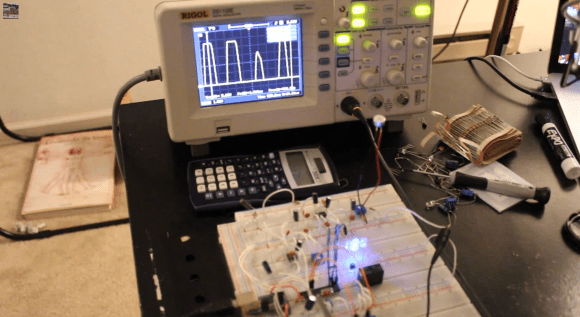Hackaday readers may remember a whistle detection device that I [limpkin] designed some time ago. As [Kevin] saw the new Staff roll call, he discovered this project and wanted to make his version of it.
In contrast with the original Whistled where all the signal processing is done in an ARM Cortex m4 microcontroler, [Kevin] uses discrete components, operational amplifiers and an Arduino Uno to detect someone’s whistle. In his video (embedded below), he goes into great lengths to explain how his circuit works along with the theory behind it. In his setup, his microphone’s signal is amplified, passed through a 1KHz-3KHz passive band-pass filter to a non-inverting amplifier with a 1000x gain (!) and finally to a voltage comparator. The Arduino measures the frequency of the signal coming out from the comparator and triggers a relay if the whistle is a ramp-up / ramp-down.
If you want to make the comparison between the two versions of the electronics, here is the link to the original whistled project.
Continue reading “Building An Analog Whistle Detection Device”












